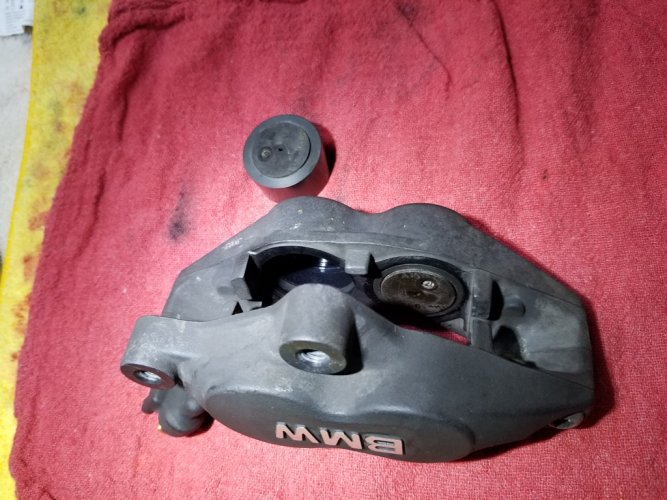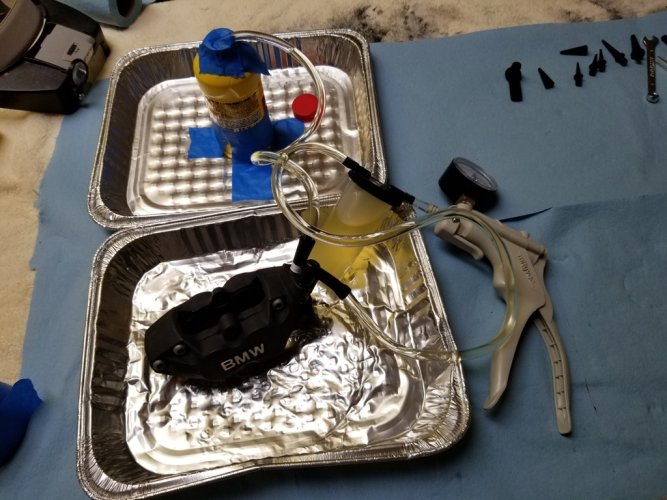Hi, all. The rear brake pads on my ‘04 K1200GT are getting pretty thin and, with the help of the trusty Clymer manual, I’m motivated to attempt their replacement.
Having read through the procedure discussed in the Clymer, I noticed something that is a bit confusing, and I wonder if anyone here can comment and set things straight:
First, we all know that the ’04 GT has the integrated ABS system (for better or worse!). The Clymer covers the iABS system in Chapter 15, while it addresses the ABS II version in Chapter 14.
So…: Chapter 15, section entitled “Rear Brake Pad Replacement,” subsection “RS and GT Models”. In my hard-copy Clymer, this is on p. 499. It says:
“The procedures to replace the rear brake pads on RS and GT models with Integral ABS are similar to ABS II models. Refer to Brake Pad in Chapter Fourteen while noting the following differences:
1. Do not remove brake fluid from the FRONT master cylinder.
… (etc.)”
So…: Chapter 14, section entitled “Rear Brake Pad Replacement,” subsection “RS Models”. Step 16 (in my hard-copy Clymer, this is on p. 460) says:
16. Remove the REAR master cylinder cover and use a syringe to remove and discard about 50 percent of the fluid from the reservoir. This prevents the MS from overflowing when the caliper pistons are compressed for reinstallation… (etc.)
So, here’s the confusion: Chapter 15 advises not to remove brake fluid from the FRONT master cylinder, while Chapter 14 says to remove brake fluid from the REAR MS. There are two possibilities here:
(a) the note in Ch. 15 is making sure that you don’t do anything with the front MS (since it is linked to both front and rear brakes), but you should do as Ch. 14 says and remove fluid from the REAR MS.
(b) The note in Ch. 15 is advising that you do NOT perform Step 16 in Ch. 14. But there’s a typo on p. 499 and it should read: “Do not remove brake fluid from the REAR master cylinder.”
My guess is that (a) is the correct interpretation, and Step 16 should indeed be performed. Question to the collective wisdom: which interpretation above is correct, (a) or (b)?
Many thanks for your patience in reading through my question and kindly coaching this newbie mechanic.
Having read through the procedure discussed in the Clymer, I noticed something that is a bit confusing, and I wonder if anyone here can comment and set things straight:
First, we all know that the ’04 GT has the integrated ABS system (for better or worse!). The Clymer covers the iABS system in Chapter 15, while it addresses the ABS II version in Chapter 14.
So…: Chapter 15, section entitled “Rear Brake Pad Replacement,” subsection “RS and GT Models”. In my hard-copy Clymer, this is on p. 499. It says:
“The procedures to replace the rear brake pads on RS and GT models with Integral ABS are similar to ABS II models. Refer to Brake Pad in Chapter Fourteen while noting the following differences:
1. Do not remove brake fluid from the FRONT master cylinder.
… (etc.)”
So…: Chapter 14, section entitled “Rear Brake Pad Replacement,” subsection “RS Models”. Step 16 (in my hard-copy Clymer, this is on p. 460) says:
16. Remove the REAR master cylinder cover and use a syringe to remove and discard about 50 percent of the fluid from the reservoir. This prevents the MS from overflowing when the caliper pistons are compressed for reinstallation… (etc.)
So, here’s the confusion: Chapter 15 advises not to remove brake fluid from the FRONT master cylinder, while Chapter 14 says to remove brake fluid from the REAR MS. There are two possibilities here:
(a) the note in Ch. 15 is making sure that you don’t do anything with the front MS (since it is linked to both front and rear brakes), but you should do as Ch. 14 says and remove fluid from the REAR MS.
(b) The note in Ch. 15 is advising that you do NOT perform Step 16 in Ch. 14. But there’s a typo on p. 499 and it should read: “Do not remove brake fluid from the REAR master cylinder.”
My guess is that (a) is the correct interpretation, and Step 16 should indeed be performed. Question to the collective wisdom: which interpretation above is correct, (a) or (b)?
Many thanks for your patience in reading through my question and kindly coaching this newbie mechanic.

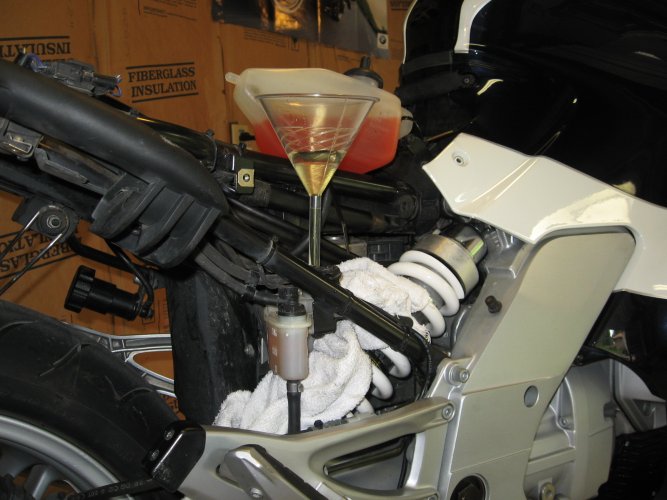
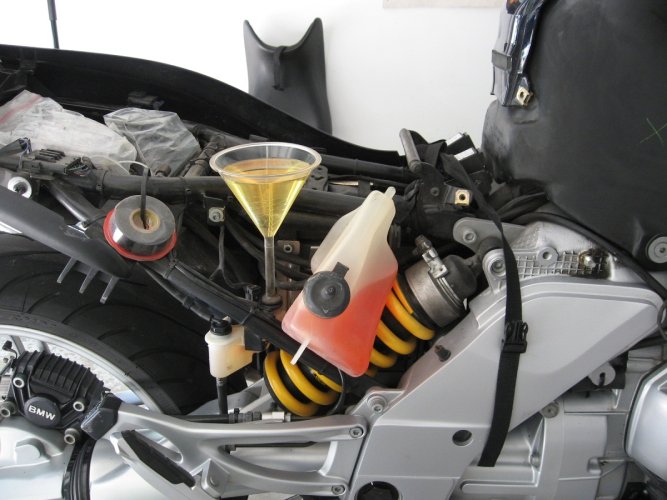
 I did the 12k mi periodic maintenance myself, but I didn't bleed the brakes since I was worried that I'd screw up the servo pump, and that's a costly mistake!!
I did the 12k mi periodic maintenance myself, but I didn't bleed the brakes since I was worried that I'd screw up the servo pump, and that's a costly mistake!!
 )
)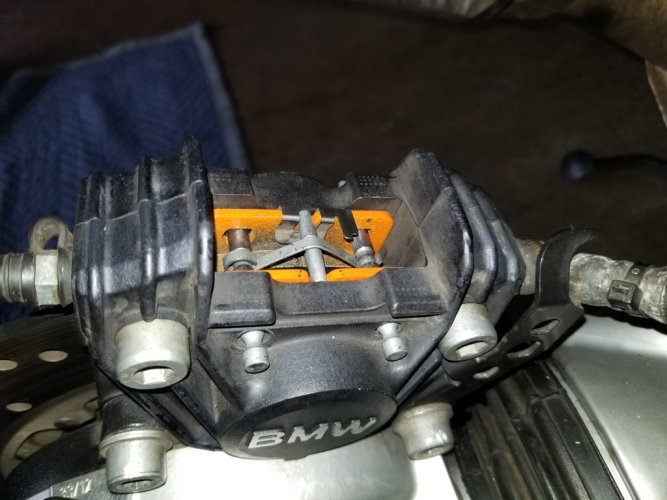
 )
)

